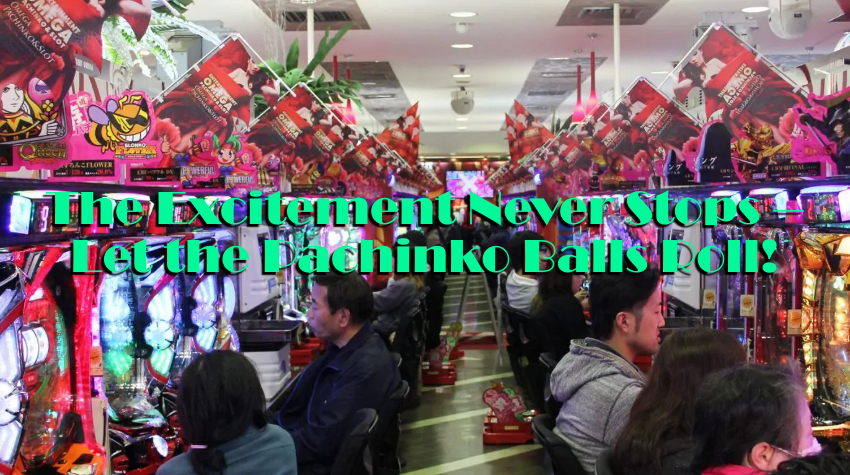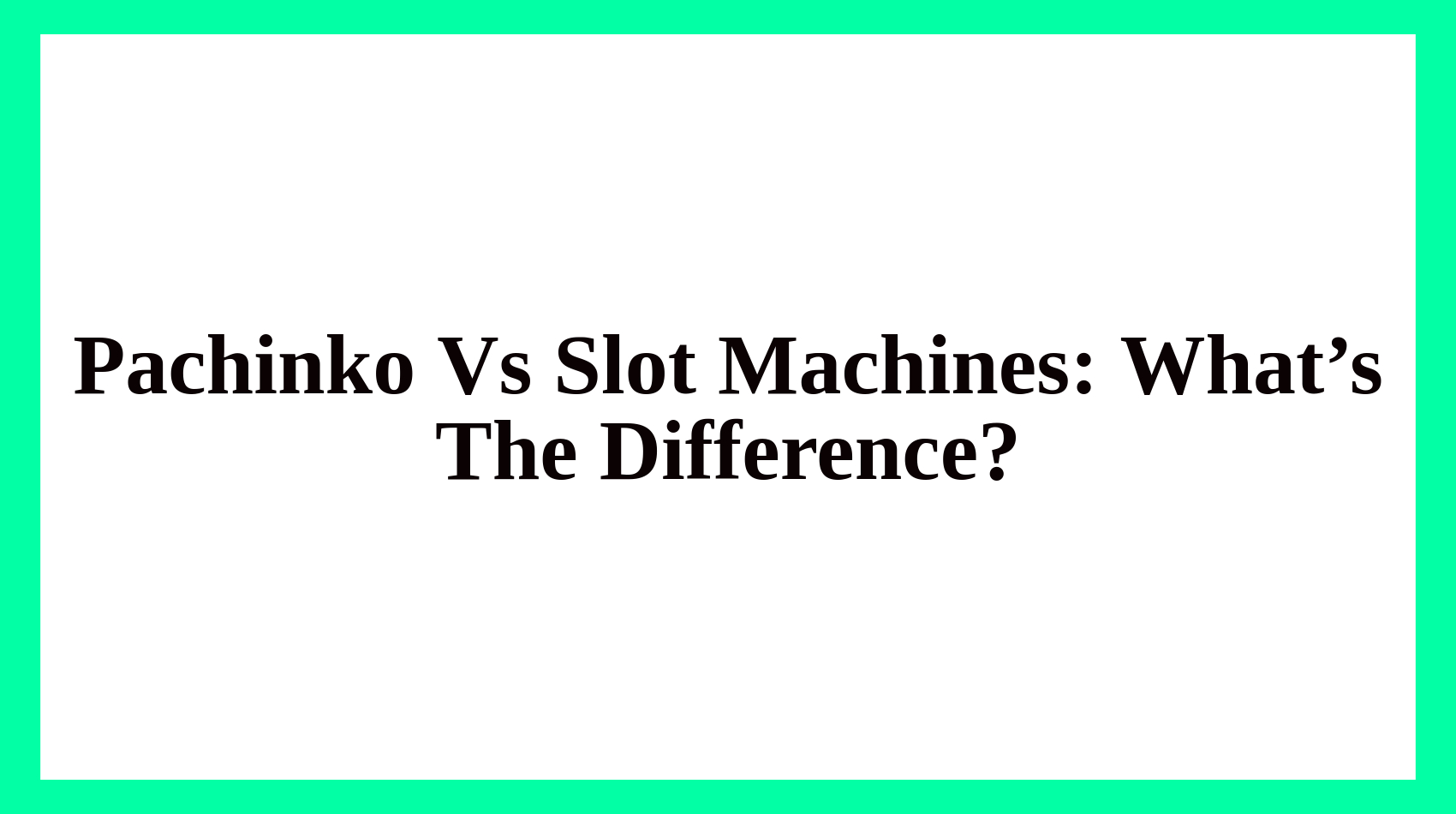Introduction: Two Icons of Gaming Culture
When it comes to popular gambling and entertainment machines, pachinko vs slot machines stand at the forefront. Pachinko, deeply ingrained in Japanese culture, is both a pastime and a billion-yen industry. Slot machines, on the other hand, dominate casinos worldwide and are among the most played games in both land-based and online casinos.
To beginners, pachinko and slots may look similar—both involve spinning, flashing lights, and the thrill of chance. Yet, the two games differ significantly in history, mechanics, payouts, and cultural context. This guide explores pachinko vs slot machines in detail, helping players understand their similarities, differences, and what makes each unique.
If you’re new to pachinko, start with this foundation: What Is Pachinko? Before comparing it to slot machines.
What Is Pachinko?
Origins and History
Pachinko is a uniquely Japanese form of gaming entertainment that has grown from a simple pastime into one of the most lucrative industries in Japan. Its roots date back to the early 20th century, when it began as a mechanical children’s game inspired by the American “Corinth game.” By the 1930s, pachinko machines were already being installed in small shops across Nagoya, and by the 1950s, they had transformed into a booming leisure activity.
Over the decades, pachinko evolved into a cultural icon, with pachinko parlors becoming a familiar sight in nearly every Japanese city and town. Today, the industry generates billions of yen annually and employs hundreds of thousands of workers. Unlike casinos, however, pachinko operates under Japan’s unique legal framework, instead of paying out direct cash prizes. These parlors award balls that can be exchanged for goods, which players then trade at nearby “exchange centers” for cash. This indirect system allows pachinko to thrive despite Japan’s strict gambling laws.
Pachinko is not only about gambling—it’s a social experience. Parlors are often noisy, brightly lit spaces filled with rows of machines, attracting both casual players and dedicated enthusiasts. For many Japanese people, pachinko is a combination of entertainment, tradition, and gambling strategy.
How Pachinko Works
Pachinko combines elements of pinball, slot machines, and arcade mechanics, making it both skill-based and luck-driven.
- Objective: The main goal is to launch small steel balls into the vertical machine, where they cascade down through a maze of pins. Players hope that enough balls land in special winning pockets to trigger payouts.
- Mechanics: Using a knob or lever, players control the speed and angle of ball launches. While outcomes rely heavily on chance, experienced players often learn how to adjust their launch to influence where balls land, giving pachinko a touch of skill that slot machines typically lack.
- Rewards: When a ball lands in a winning pocket, the machine activates a jackpot mode, often resembling a slot machine on its screen. This results in a payout of hundreds or even thousands of additional balls. These balls can then be exchanged for goods, electronics, or vouchers—indirectly convertible into cash.
Pachinko machines have also undergone a digital transformation in recent decades, incorporating video screens, themes based on anime or movies, and high-tech sound effects to keep players engaged. This blend of tradition and technology makes pachinko stand out not only as a gaming experience but also as a cultural entertainment form.
What Are Slot Machines?
Origins and Evolution
Slot machines, commonly called “one-armed bandits”, originated in the United States in the late 19th century. The first recognizable slot machine, the Liberty Bell, was invented by Charles Fey in San Francisco in 1895. It featured three spinning reels and simple symbols (horseshoes, bells, and playing cards). Winning combinations would trigger a payout of coins.
Throughout the 20th century, slot machines became a staple in casinos worldwide. Their appeal came from simplicity—anyone could sit down, pull a lever (or press a button), and instantly know if they won. With the legalization and expansion of casinos in Las Vegas, Atlantic City, and later Macau, slots became the most popular casino game globally.
The rise of the internet in the 1990s and 2000s ushered in the next significant leap: online slot machines. These digital versions introduced thousands of themes—ranging from classic fruit slots to branded movie tie-ins—and advanced features, such as bonus rounds, free spins, and progressive jackpots that can reach millions of dollars. Today, online slots dominate the iGaming industry, offering variations designed to cater to every type of player.
How Slot Machines Work
Unlike pachinko, which involves both chance and skill, slot machines are purely chance-based.
- Objective: The goal is to spin reels and align matching symbols across predetermined paylines. Depending on the machine, this could mean matching three symbols in a row or forming more complex combinations across dozens—or even hundreds—of paylines.
- Mechanics: In the past, players pulled a lever that mechanically spun reels. Modern slots, however, are digital and run on Random Number Generators (RNGs). RNGs ensure every spin is independent and fair, eliminating predictability. Players simply choose their bet size, press the spin button, and wait for the outcome.
- Rewards: Slot payouts vary depending on:
- The number of matching symbols.
- Bet size (higher bets increase payout potential).
- Special features include wilds, scatters, and multipliers.
- Progressive jackpots, where a portion of each bet contributes to a growing prize pool.
Slots are beloved worldwide because they require no learning curve and offer the excitement of potentially life-changing jackpots with a single spin. From simple three-reel classics to immersive video slots with cinematic graphics, slots have evolved into a diverse and endlessly entertaining category of casino games.
Pachinko vs Slots: Early Observations
When comparing the two:
- Pachinko is more interactive, requiring players to control ball launches and engage actively.
- Slot machines are more automated, relying entirely on RNG for outcomes.
- Pachinko remains a Japanese cultural icon, while slots dominate the global casino and online market.
Pachinko vs Slot Machines: Key Differences
Gameplay Style
- Pachinko: Combines skill and luck, as players can control how balls are launched.
- Slots: Purely chance-based, with no player influence once reels spin.
Payout Structure
- Pachinko: Rewards balls, which are exchanged for prizes and sometimes indirectly for money.
- Slots: Payouts are direct, based on symbols and paylines. Online slots often include bonus rounds.
| Factor | Pachinko | Slot Machines |
| Control | Player adjusts ball launch | RNG decides outcomes |
| Prize Type | Balls → Prizes → Money | Direct money payouts |
| Cultural Setting | Pachinko parlors in Japan | Casinos & online platforms worldwide |
| Skill Involvement | Partial | None |
Why Pachinko Appeals to Japanese Players
Cultural Familiarity
Pachinko is deeply tied to Japanese culture, much like karaoke or manga. Many players view it less as a form of gambling and more as entertainment.
Accessibility
Pachinko parlors are ubiquitous in Japan, making the game accessible to even casual players. Unlike casinos, they do not require special memberships or travel to be played.
Why Slot Machines Dominate Globally
Simplicity and Variety
Slots require no learning curve—just spin and win. The global market offers thousands of themed slots, from classic fruit symbols to blockbuster movie tie-ins.
Online Adaptation
The digital age has fueled the massive growth of online slots, where features like progressive jackpots, animations, and interactive bonus games keep players engaged.
Similarities Between Pachinko VS Slot Machines
Entertainment Value
Both games thrive on lights, sounds, and suspense, creating an exciting experience regardless of outcome.
Psychological Triggers
- Bright visuals and sound effects reward small wins, keeping players engaged.
- Both rely on the thrill of chance, appealing to players seeking excitement.
Risks and Considerations
Gambling Addiction Potential
Both pachinko and slots can be highly addictive. With fast gameplay and frequent small wins, players may lose track of time and money.
Legal Differences
- Japan: Pachinko is legal through its prize-exchange system.
- Global Slots: Regulated by gambling commissions, with direct cash payouts.
Which Game Should You Play?
Choose Pachinko If…
- You are in Japan and want a cultural experience.
- You enjoy games that combine skill with a touch of chance.
- You prefer prize-based play over direct cash wins.
Choose Slots If…
- You want direct payouts with a chance at big jackpots.
- You enjoy variety, themes, and online access.
- You prefer simple, chance-driven gameplay.
Conclusion: Two Games, Two Worlds

\ The Excitement Never Stops – Let the Pachinko Balls Roll! /
Pachinko and slot machines may share surface similarities, but their cultural roles, mechanics, and payouts set them apart. Pachinko thrives as a uniquely Japanese pastime, blending skill and entertainment, while slot machines dominate the global casino industry due to their sheer accessibility and variety.
For casual players in Japan, understanding both games provides insight into how gambling and entertainment intersect across cultures.
If you’re eager to explore more comparisons, strategies, and guides, check out Casino Savvy — your trusted source for reliable casino insights and tips.









Comments